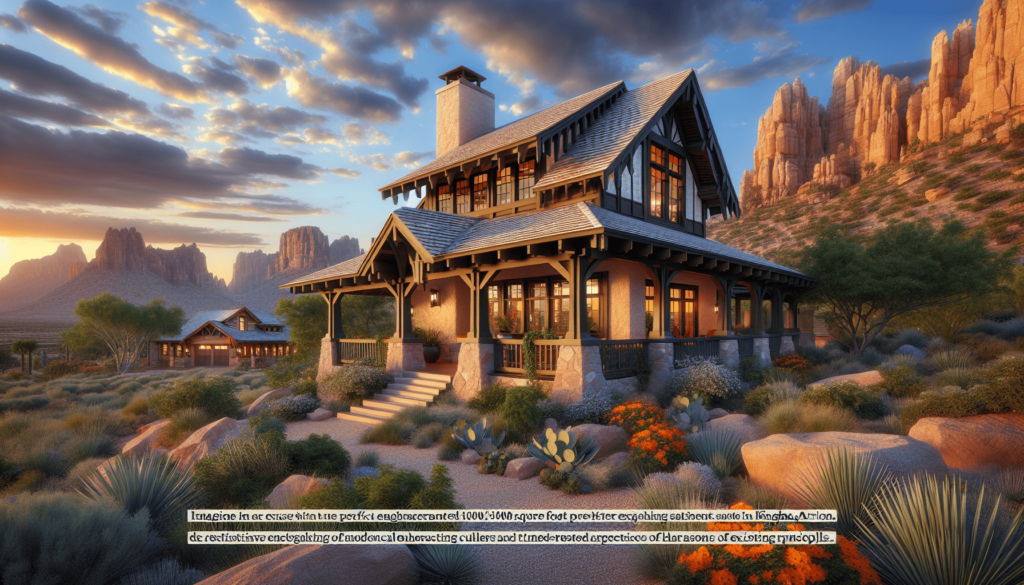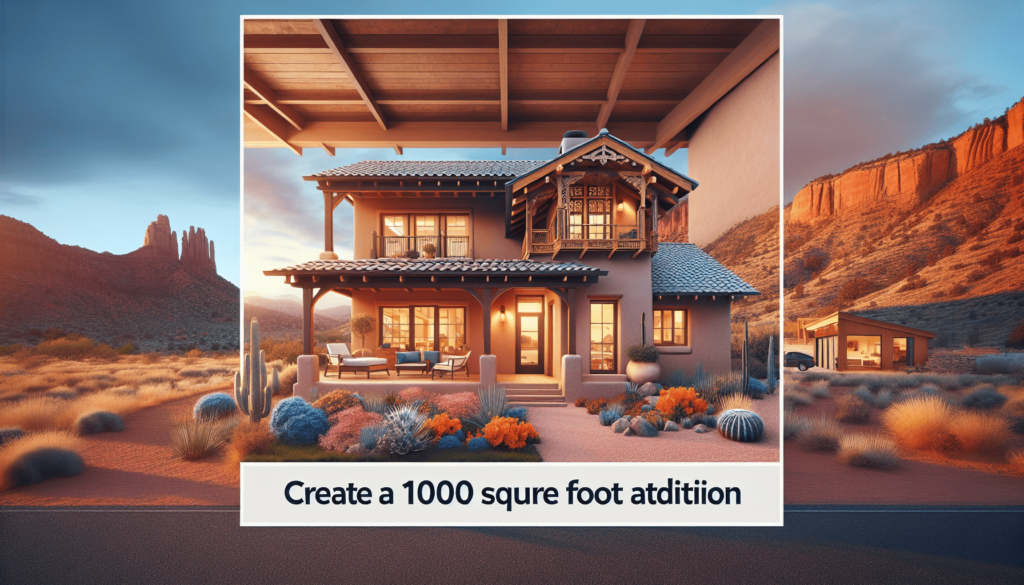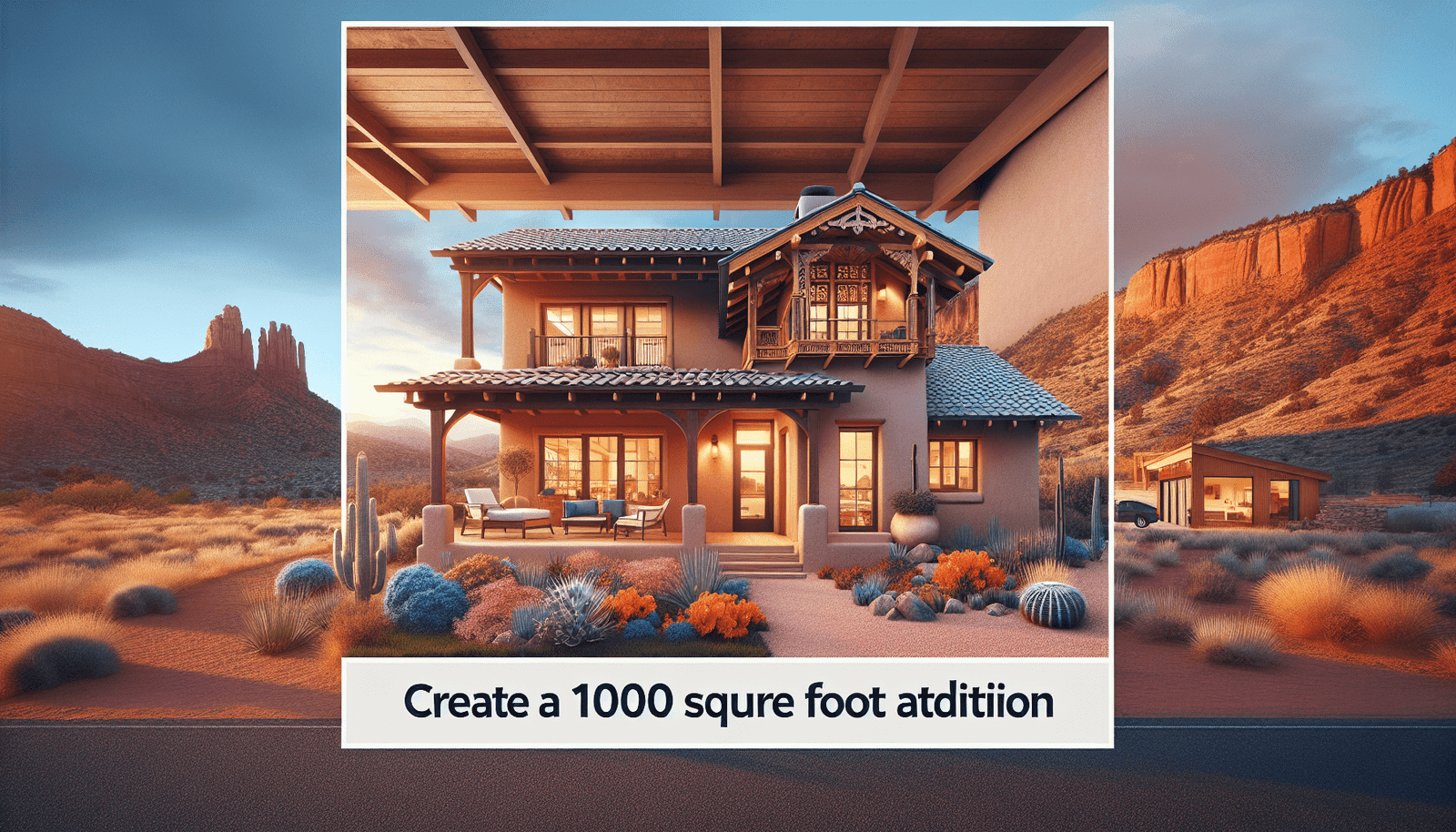Embarking on a home expansion project, such as adding 1000 square feet to your house in Kingman, Arizona, can be an exciting endeavor that brings new life and space to your abode. However, before you start dreaming about the extra room and how you’ll use it, getting a clear understanding of the financial investment required for such a significant addition is crucial. In Kingman, Arizona, the cost of this home improvement could vary widely based on factors like materials, labor, and any unique features or challenges your property presents. This article aims to give you a ballpark figure to help plan your budget and make informed decisions as you enhance your living space.

Understanding the Basics of Home Addition
Definition of home addition
When you think about expanding your living space, a home addition is often the most effective route. Essentially, it involves expanding the footprint of your existing structure to add more square footage. This can range from adding a new room, extending a current one, or even building a separate structure on your property.
Types of home additions
There are several types of home additions to consider. For instance, you might opt for a conventional addition, which is essentially a multi-room structure built onto the side of your house. Or, you might lean towards a sunroom, which offers additional light-filled living space. Other options include garage conversions, second-story additions, or even simple bump-out additions that can enlarge a current room.
Benefits of adding square footage to your home
Expanding your home brings numerous benefits. For starters, it increases your living space, giving you and your family more room to breathe, grow, and entertain. Moreover, it can significantly enhance your home’s value, ensuring a lucrative return on investment if you decide to sell in the future. Additionally, customizing your home through additions can make your living space more enjoyable and tailored to your lifestyle needs.
Factors Influencing the Cost of Home Addition in Kingman, Arizona
Local construction costs
The location of your home plays a substantial role in determining the overall cost of your home addition. In Kingman, Arizona, factors such as the availability of construction materials and local labor rates influence the cost. The local economy can also affect prices, with booming market conditions leading to higher costs.
The complexity of the addition
The more complex your addition project, the higher the cost. For example, adding a second story involves more intricate construction than expanding an existing room. The need for structural reinforcements, complex electrical and plumbing work, and additional materials contribute to increased costs.
Materials and finishes
The choice of materials and finishes dramatically affects the final price of your home addition. Opting for high-end materials or custom finishes can elevate the project’s cost, while more standard options can help keep expenses down. It’s all about finding the right balance between quality and budget.
Permitting and regulation costs
Before starting your home addition, you must navigate Kingman’s permitting and regulation landscape. The cost of obtaining necessary permits and adhering to local building codes can vary, affecting the overall budget for your project. It’s crucial to factor these expenses into your initial budget planning.
Average Cost of Adding 1000 Square Feet
Cost per square foot in Kingman
In Kingman, Arizona, the cost to add 1000 square feet to your house can vary widely based on several factors, including those mentioned above. On average, you can expect to spend a certain amount per square foot. This figure can fluctuate based on the current construction market conditions and the specifics of your project.
Comparative costs with other regions
When compared to other regions, Kingman’s cost for home additions may be more affordable due to lower labor rates and material costs. However, this can change over time with market trends. It’s always a good idea to research and compare costs in different locations if you have flexibility in where you undertake your home addition project.
Planning and Budgeting
Creating a realistic budget
Embarking on a home addition project requires careful financial planning. Begin by defining a clear scope of work and then obtain estimates from contractors to understand the potential costs. Incorporating a buffer of 10-20% for unforeseen expenses can help ensure you’re prepared for any surprises.
Contingency planning
No construction project goes perfectly according to plan. That’s why having a contingency fund is crucial. It helps manage any unexpected costs or changes to the project scope, ensuring that these hiccups don’t derail the entire endeavor.
Financial options for homeowners
Fortunately, there are several financial options available for homeowners looking to add to their houses. Home equity loans, home improvement loans, and refinancing are popular choices. Explore each option to find the best fit for your financial situation and project needs.

Design Considerations for a Home Addition
Architectural design
The architectural design of your home addition is pivotal in achieving a seamless integration with your existing structure. Hiring a skilled architect can ensure that the new space complements your home’s original style while also meeting your functional needs.
Integrating new with existing structures
A key challenge in home additions is blending the new with the old. Considerations like roofline modifications, exterior materials, and window styles are important to create a cohesive look. Experienced contractors and architects can offer valuable insights into making these transitions smooth and aesthetically pleasing.
Future-proofing your addition
As you plan your addition, think long-term. Incorporating flexible design elements can allow the space to evolve with your changing needs, making it a wise investment in your home’s future.
Permitting Process in Kingman
Understanding local regulations
Familiarizing yourself with Kingman’s local building regulations is a crucial first step. These rules govern what you can and cannot do during your construction project and ensure that your addition is safe and compliant.
Required documentation
Typically, the permitting process requires submitting detailed construction plans and obtaining approvals from local authorities. This might include floor plans, elevation drawings, and structural details, all demonstrating compliance with local codes.
Timeline and fees
The permitting process in Kingman can vary in duration and cost, depending on the scope of your project. Expect to allocate a portion of your budget and project timeline to obtain necessary approvals before construction can commence.
Choosing a Contractor
Finding the right contractor
Selecting a contractor who is experienced, reputable, and well-versed in Kingman’s specific construction rules is vital to the success of your project. Start by seeking recommendations, reading reviews, and conducting interviews.
Evaluating bids
When reviewing bids from contractors, look beyond the bottom line. Consider the detailed breakdown of costs, the proposed timeline, and the quality of materials. Transparency and clarity at this stage can help prevent misunderstandings down the line.
Contractor credentials and references
Ensure that your chosen contractor holds all necessary licenses and insurance. Additionally, ask for references from recent projects to gauge their experience and the satisfaction of their clients. Taking these steps can help ensure a trustworthy and competent partner for your addition project.
Construction Phase
Timeline expectations
Setting realistic expectations for your project timeline is important. While contractors can provide estimates, remember that delays can occur due to weather, material availability, or unforeseen construction challenges.
Living through construction
Living in your home during the construction phase can be challenging. Prepare for noise, dust, and disruptions to your daily routine. Setting up temporary solutions and keeping communication lines open with your contractor can ease this process.
Managing construction challenges
Encountering challenges during construction is common. Effective communication with your contractor, maintaining flexibility, and staying proactive in decision-making can help navigate these issues smoothly.
Interior Finishing and Decor
Selecting interior finishes
Choosing the right interior finishes—such as flooring, cabinetry, and countertops—can significantly impact the look and feel of your new space. Consider both aesthetics and functionality to make selections that elevate your home addition.
Flooring options
Flooring options like hardwood, tile, or carpet offer different benefits and ambiances. Matching existing flooring can create a unified look, or you could opt for a complementary style for a distinct yet harmonious design.
Paint and wallpaper choices
The final touches of paint and wallpaper play a vital role in defining the character of your addition. Whether you’re aiming for a bold statement or a subtle backdrop, these elements can transform your new space.
Return on Investment and Valuation Impact
Assessing the ROI of home addition
Evaluating the return on investment (ROI) of a home addition involves comparing the cost of the project against the added value to your home. While it’s generally a positive move, the exact ROI can vary based on the type of addition and current market conditions.
Impact on property taxes
It’s important to consider that increasing your home’s square footage will likely lead to higher property taxes. Assess the potential tax implications to understand the full financial impact of your home addition.
Influence on home appraisal value
A well-executed home addition can boost your property’s appraisal value significantly. By enhancing square footage and functionality, you’re not just creating a more enjoyable living space but also investing in your home’s market appeal for the future.

